Search the Blog
Categories
- Books & Reading
- Broadband Buzz
- Census
- Education & Training
- General
- Grants
- Information Resources
- Library Management
- Nebraska Center for the Book
- Nebraska Memories
- Now hiring @ your library
- Preservation
- Pretty Sweet Tech
- Programming
- Public Library Boards of Trustees
- Public Relations
- Talking Book & Braille Service (TBBS)
- Technology
- Uncategorized
- What's Up Doc / Govdocs
- Youth Services
Archives
Subscribe
Category Archives: Uncategorized
Friday Reads: Exile from Eden, by Andrew Smith

Exile from Eden, the featured title in this Friday Reads, is the sequel to Andrew Smith’s 2014 apocalyptic novel, Grasshopper Jungle, which I claimed as my new favorite book in a July 15, 2016 Friday Reads. I guess, therefore, this is a sequel Friday Reads.
Exile from Eden begins sixteen years after six-foot-tall praying mantises with a taste for human flesh forced Austin Szczerba, Robby Brees, and Shann Collins, along with Robby’s mother, Connie Brees, her boyfriend, Louis Sing, Shann’s mother and stepfather, Wendy and Johnny McKeon, and Austin’s dog, Ingrid, to hole up in an underground bunker, called Eden. During these sixteen years, Johnny McKeon and Ingrid have died, and Arek Szczerba and Mel Sing have been born. Arek is the son of Austin and Shann, though he considers Robby his second father. Mel is the daughter of Connie and Louis.
Narrated by sixteen-year-old Arek, Exile from Eden tells the story of what happens when he and fifteen-year-old Mel leave Eden (or, as Arek calls it, “the hole”) to search for Austin and Robby, who have failed to return from one of their regular supply-gathering missions. A road trip adventure ensues. As was the case with Grasshopper Jungle, however, Exile from Eden is about so much more than a mere plot summary would suggest. After all, as Austin stated in Grasshopper Jungle, “[g]ood books are about everything.”
In Grasshopper Jungle, Austin was obsessed with recording history and telling the truth. In Exile from Eden, Arek, his son, also ruminates on truth—how we construct it for ourselves and try to convey it to others: “All stories are true the moment they are told,” Arek states in the opening sentence of the book. “Whether or not they continue to be true is up to the listener” (3).
Because he was born and raised in the hole, Arek has no firsthand knowledge of the before-the-hole world, and extremely limited exposure to the new post-apocalyptic world outside the hole. To address this deficit, his father, Austin, brings back artifacts—including books, maps, and paintings—to try to build a model of the world for Arek. As Arek discovers after leaving the hole, however, “the model . . . is not the thing” (110). This leads him to further epistemological exploration of what we can know and how we can know it:
. . . My father’s model of the world was supposed to represent everything that was outside the hole. The only thing that can re-present anything real is the thing itself. No models can ever adequately perform that job.
The model presents—and re-presents—only the model, and nothing more.
And the data—what’s really outside the hole—does not call to us, so we must go to it, and then interpret its meaning with our incompetent human minds. The data is mute; we give it an imperfect voice. (110)
Exile from Eden juxtaposes the before-the-hole world, with its rules and protocols, shame and inhibitions, with the terrifying, unstructured freedom offered by the after-the-hole world. In Eden, Arek’s grandmother, Wendy–“SPEAKER OF LAWS” (20), believer in following instructions, and segregator of the sexes—represents the pre-hole world. The promise of the post-hole world, on the other hand, is captured most powerfully by a line from Herman Melville’s Moby-Dick, recited by Arek’s father, Austin, after he and Arek finish reading the book aloud to each other: “In landlessness alone resides the highest truth, shoreless, indefinite as God” (244).
At one point, Austin tells Arek “you and Mel are like the first humans on earth. You are the new people, without the baggage everyone carried with them, without end, from before” (188). Indeed, after months outside the hole, Arek describes Mel and himself as “joined to the world outside, not as pieces of a model, but as the thing itself” (347).
In the final chapter, when he and Mel finally reunite with Austin and Robby, Arek, channeling Melville, describes himself as “Shoreless Man.” And when Austin asks how he likes it outside the hole, Arek replies “There are no rules, and it’s wild” (353). Based on the premise set up throughout the book, this is a good thing and a happy ending.
Smith, Andrew. Exile from Eden. New York: Simon & Schuster Children’s Publishing, 2019.
“All the Gallant Men: An American Sailor’s Firsthand Account of Pearl Harbor” Chosen as 2020 One Book One Nebraska

FOR IMMEDIATE RELEASE:
November 12, 2019
FOR MORE INFORMATION:
Tessa Terry
402-471-3434
800-307-2665
All the Gallant Men: An American
Sailor’s Firsthand Account of Pearl Harbor
Chosen as 2020 One Book One Nebraska
People across Nebraska are encouraged to read the work of a Nebraskan —and then talk about it with their friends and neighbors. All the Gallant Men: An American Sailor’s Firsthand Account of Pearl Harbor (William Morrow, 2016) by Donald Stratton, with Ken Gire is the 2020 One Book One Nebraska selection.
All the Gallant Men is the first memoir by a USS Arizona survivor. Born in Inavale, Nebraska and raised in Red Cloud, Donald Stratton joined the Navy in 1940 at the age of eighteen. On December 7, 1941 he was a Seaman First Class on the USS Arizona. Stratton’s account of the Pearl Harbor attack is seventy-five years in the making, as he finally shares his personal tale at the age of ninety-four. His story is one of survival and determination as he recovered from the severe injuries he sustained in the attack, and ultimately re-enlisted to fight again.
The Nebraska Center for the Book selection committee found All the Gallant Men to be a valuable part of our understanding of the attack on Pearl Harbor. Because it was written by a survivor of the attack on the USS Arizona, the book includes details that most readers have never encountered in either history classes or through other books about the subject. The book is not only an integral part of our knowledge of December 7, 1941, but it is also well written. As we approach the 80th anniversary of the Pearl Harbor attack, the committee felt that it was a timely choice for Nebraskans to read this account written by one of their own.
Libraries across Nebraska will join other literary and cultural organizations in planning book discussions, activities, and events that will encourage Nebraskans to read and discuss this book. Support materials to assist with local reading/discussion activities will be available after January 1, 2020 at http://onebook.nebraska.gov. Updates and activity listings will be posted on the One Book One Nebraska Facebook page at http://www.facebook.com/onebookonenebraska.
2020 will mark the sixteenth year of the One Book One Nebraska reading program, sponsored by the Nebraska Center for the Book. It encourages Nebraskans across the state to read and discuss one book, chosen from books written by Nebraska authors or that have a Nebraska theme or setting. The Nebraska Center for the Book invites recommendations for One Book One Nebraska book selection year-round at http://centerforthebook.nebraska.gov/obon-nomination.asp.
One Book One Nebraska is sponsored by the Nebraska Center for the Book, Humanities Nebraska, and the Nebraska Library Commission. The Nebraska Center for the Book brings together the state’s readers, writers, booksellers, librarians, publishers, printers, educators, and scholars to build the community of the book, supporting programs to celebrate and stimulate public interest in books, reading, and the written word. The Nebraska Center for the Book is housed at and supported by the Nebraska Library Commission.
As the state library agency, the Nebraska Library Commission is an advocate for the library and information needs of all Nebraskans. The mission of the Library Commission is statewide promotion, development, and coordination of library and information services, “bringing together people and information.”
###
The most up-to-date news releases from the Nebraska Library Commission are always available on the Library Commission website, http://nlc.nebraska.gov/publications/newsreleases.
A History of the Census in the United States: Part 5
The Fifth Census: Census Day was June 1, 1830.
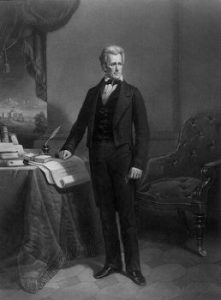
on Census Day, June 1, 1830.
Authorizing Legislation
President John Q. Adams, in his fourth address to the U.S. Congress on December 28, 1828, recommended starting the census earlier in the year than August 1. He also proposed that the collection of age data be extended from infancy, in intervals of 10 years, “to the utmost boundaries of life.” These changes were incorporated into the census act of March 23, 1830.
Enumeration
As in the previous census, marshals or their assistants visited every dwelling house for enumeration, or, as the law stated, made a personal inquiry of the head of every family in their district. Because of delays in the compilation of the census returns, the filing date was extended to August 1, 1831.
In 1830, enumerators used uniform printed schedules for the first time. In prior censuses, marshals had used whatever paper was available and had designed and bound the sheets themselves. Because federal census clerks did not have to sort through a huge variety of schedules in 1830, they were able to tabulate census results more efficiently.
The 1830 census counted the population only. After the failures of the past two censuses, no attempt was made to collect additional data on manufacturing and industry in the United States.
Further Information
- A wide variety of historical statistics from this and other decades is available in Historical Statistics of the United States: Colonial Times to 1970. It is available as a PDF [74.4MB] or 2-part ZIP file: Part I [52.2MB] | Part II [66.1MB].
- Reports and statistics from the 1830 census.
- History and Growth of the United States Census: 1790-1890 [PDF 117MB], by Carroll D. Wright and William C. Hunt.
Information provided from Census.gov
Friday Reads: Live Young Forever

What I was really looking for was a biography about Jack LaLanne, but unfortunately, I was not able to find any. The next closest thing (although I later found out there was a documentary film made about Jack, called Anything is Possible, but only about 39 minutes in length) was Live Young Forever, which did just fine and it was written by Jack himself. How did I get to the point of seeking out this book? Well, for one I never learned of Jack’s world famous feats until years after they occurred, having mostly known him for his juicer infomercials that aired when I was a kid after the Saturday cartoons. Jack’s exercise show was before my time. I remember him as the old health nut in the jumpsuit hawking juicing machines. Then recently, I clicked PBS on and got intrigued by the documentary called Fat, Sick, and Nearly Dead. The documentary follows Australian entrepreneur, author, and filmmaker Joe Cross across the U.S., as he went on a 60-day journey of consuming only juices from fresh fruits and vegetables. While Jack advocated healthy doses of exercise, juice, fish, fruits, and vegetables, Joe’s condition (he weighed over 300 pounds and had a host of health conditions) necessitated a juice only “fast” to kick start his health. Then I realized I’d unfortunately (for me) sold my mom’s Jack LaLanne juicer at a garage sale for $10, so it was off to find another.
Back to Jack. For anyone looking to live a healthier lifestyle, this book has quite a few essential elements such as diet, exercise, and motivation. However, it was Jack’s personal stories that I liked the best. Aside from his health advocacy and TV show, this book also contains numerous stories of his famous feats. Such as a 21-year old Arnold Schwarzenegger, who in 1968 came to Venice beach in California and witnessed a 54-year old LaLanne doing chin-ups and push-ups. Arnold declared a challenge, and lost badly to LaLanne. Said Arnold: “That Jack LaLanne’s an animal! I was sore for four days. I couldn’t lift my arms.” Some of Jack’s other feats included:
- 1955 (age 41) swam from Alcatraz Island to Fisherman’s Wharf, while handcuffed;
- 1956 (age 42) set a claimed world record of 1,033 push-ups in 23 minutes;
- 1959 (age 45) did 1,000 jumping jacks and 1,000 chin-ups in 1 hour, 22 minutes;
- 1974 (age 60) swam the same Alcatraz to Fisherman’s Wharf route, handcuffed, shackled at the ankles, and towing a 1,000 lb boat;
- 1976 (age 62) swam one mile in Long Beach Harbor, handcuffed and shackled, towing 13 boats to represent the original 13 colonies, and containing 76 people; and
- 1984 (age 70) swam 1 mile in Long Beach Harbor, handcuffed and shackled, towing 70 rowboats containing various guests.
Finally, my favorite Jack LaLanne quote:
“15 minutes to warm up? Does a lion warm up when he’s hungry? ‘Uh oh, here comes an antelope. Better warm up.’ No! He just goes out there and eats that sucker.”
Resources for Libraries and the 2020 Census

Apply by Nov. 22 for Library Census Equity Fund
The American Library Association (ALA) is accepting applications for Library Census Equity Fund mini-grants until Nov. 22. ALA will provide 25 libraries with $2,000 mini-grants to bolster their service to hard-to-count communities and help achieve a complete count in the 2020 Census.
Census hiring: Nov. 6 webinar and new tip sheet
The U.S. Census Bureau is currently hiring 500,000 temporary workers for the 2020 Census through an online application process. To achieve a complete count in the 2020 Census, the Census Bureau needs to recruit qualified and diverse applicants in every part of the country. To learn how libraries can promote awareness of 2020 Census job opportunities, register for ALA’s free webinar on Nov. 6 and read ALA’s new tip sheet, “How Can My Library Increase Awareness of 2020 Census Hiring?” (PDF).
Preparing your library for the Census: Nov. 14 webinar and new tip sheet
With the 2020 Census just a few months away, how can libraries prepare, and what funding sources may be available to support libraries’ preparations and activities? Learn more at ALA’s free webinar on Nov. 14 and read ALA’s new tip sheet, “Preparing My Library for the 2020 Census” (PDF).
Trustees invited to become Library Census Champions
Library Census Champions is a new network of state, local and tribal library Trustees helping their libraries and communities prepare for the 2020 Census. Elected and appointed library Trustees can sign up to become a Library Census Champion and receive free information, resources, and actions to take to ensure a fair and accurate census. To learn more about this program, Register to watch the recording on-demand.
Census resources from ALACheck ala.org/census for updates through the 2020 Census as ALA continues to add new resources. For instance, find Libraries Transform images, template presentation slides (PPTX) and presenter notes (PDF)
Upcoming events
- November 6, 2019: Webinar: “Connecting Your Community to 2020 Census Jobs”
- November 14, 2019: Webinar: “Preparing Your Library for the 2020 Census”
- January 25, 2019: ALA Midwinter Meeting: “2020 Census: How Libraries Can Support a Complete Count”
- February 28, 2019: PLA Conference: “2020 Census Countdown: What You Need to Know Now”
A History of the Census in the United States: Part 4
The Fourth Census: Census Day was August 7, 1820.
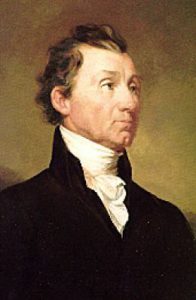
on Census Day, August 7, 1820.
Authorizing Legislation
The fourth census was taken in accordance with the census act of March 14, 1820, which required more detailed population-related inquiries than earlier enumerations. This census is notable for being the first to inquire if respondents were engaged in agriculture, commerce, or manufacturing.
Enumeration
The enumeration began on the first Monday of August. Its scheduled six-month completion time frame was extended by about seven months to September 1, 1821. As in previous decades, the 1820 census act again required assistant marshals to visit every dwelling house, or head of every family within their designated districts.
Data relating to manufacturing were collected by assistants in each district, sent to the marshals, and then transmitted to the secretary of state along with the population returns. The report on manufacturing presented the data for these establishments by counties, but the results were not summarized for each district and the aggregate statement that was released was based on incomplete returns. The 1820 manufacturing census suffers the same criticism as that in 1810: Poor enumerator training resulted in dramatic variations in data quality and accuracy.
Further Information
- A wide variety of historical statistics from this and other decades is available in Historical Statistics of the United States: Colonial Times to 1970. It is available as a PDF [74.4MB] or 2-part ZIP file: Part I [52.2MB] | Part II [66.1MB].
- Reports and statistics from the 1820 census
- History and Growth of the United States Census: 1790-1890 [PDF 117MB], by Carroll D. Wright and William C. Hunt.
November is Native American Heritage Month
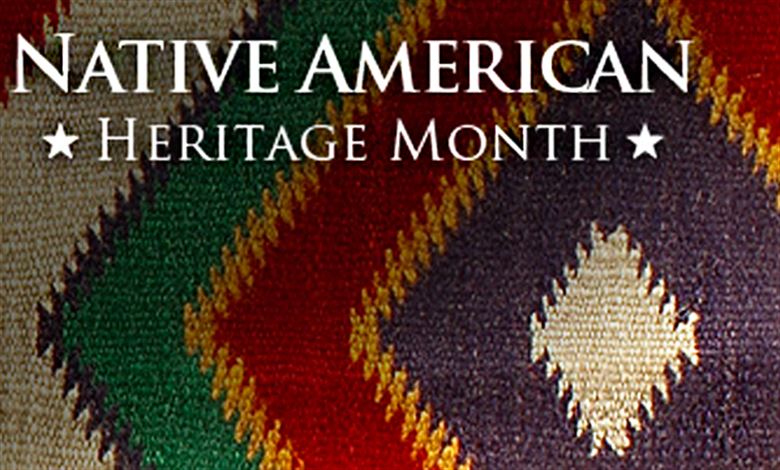
November is National American Indian Heritage Month. The Library of Congress, National Archives and Records Administration, National Endowment for the Humanities, National Gallery of Art, National Park Service, Smithsonian Institution and United States Holocaust Memorial Museum join in paying tribute to the rich ancestry and traditions of Native Americans.
Visit the National American Indian Heritage Month website to view a Calendar of Events, Exhibits and Collections, Audio and Video, Resources for Teachers, Images, and much more!
2020 Census: The Law Is Clear–Personal Information Cannot Be Shared
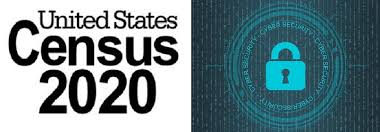
The mission of the Census Bureau is to serve as the nation’s leading provider of quality statistics about its people and economy. They couldn’t produce this information without you. Responsible data stewardship is how they maintain your trust. Being responsible stewards of your data is not only required by law but also embedded in their culture.
The Law Protects Your Information. Under Title 13 of the U.S. Code, your information must be kept confidential, and your answers cannot be used against you by any government agency or court. Anyone who violates this law faces severe penalties.
They Use Cutting-Edge Safeguards To Protect Your Identity. They do not identify individuals in the statistics they publish. Their policies and safeguards help them ensure the confidentiality of your information. Our Disclosure Review Board verifies that any product they release meets their confidentiality standards. Click on the link to learn more about the U.S Census Bureau’s Data Protection and Privacy Program: Find Out More.
Throwback Thursday: Halloween Party
Happy Halloween from Nebraska Memories!
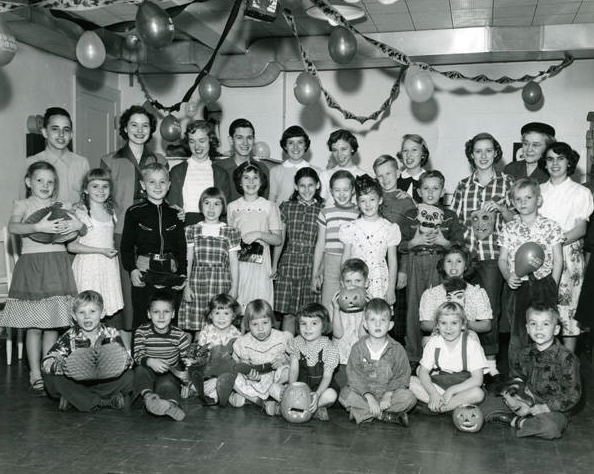
This week’s #ThrowbackThursday features a 9 1/2″ x 7 1/2″ black and white photograph of a Halloween party for the Nebraska Children’s Home Society in 1951. The Omaha North High School Red Cross provided this Halloween party with games and treats for the children.
This picture is provided and owned by the Nebraska Children’s Home Society. The Nebraska Children’s Home Society was chartered September 1, 1893. NCHS Founders had a vision for a better future and believed that every child deserved a family.
Interested in Nebraska history? Check out this collection and more on the Nebraska Memories archive!
Nebraska Memories is a cooperative project to digitize Nebraska-related historical and cultural heritage materials and make them available to researchers of all ages via the Internet. The Nebraska Memories archive is brought to you by the Nebraska Library Commission. If your institution is interested in participating in Nebraska Memories, see http://nlc.nebraska.gov/nebraskamemories/participation.aspx for more information
Resources for Veterans, their Families, Caregivers, and Survivors

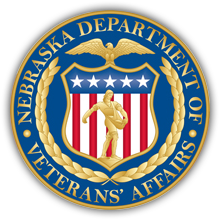
The U.S. Department of Veterans Affairs and the Nebraska Department of Veterans Affairs websites offer many resources for Veterans, their families, caregivers, and survivors.
For example, the U.S. VA website offers information on GI Bill benefits, Healthcare, Disability, Education, Veterans Day information and discounts, a website to help find old service friends, informational podcasts and webinars, and much, much more. You can even sign up for email updates to receive the latest news about VA benefits.
The Nebraska Department of Veterans Affairs website offers similar information, but more specifically for Nebraska Veterans. Job Fairs in Nebraska, general veterans employment, who to contact for veterans financial aid, tuition aid, and a guide to disability claims & appeals, just to name a few.
November Health Outreach Resources
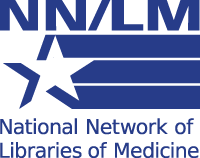
November is …
- National Family Health History Month
- National American Indian Heritage Month
- American Diabetes Month
The National Network of Libraries of Medicine has just released resources to help you plan health programs and promote health information during November. Links include a program kit, webinars, electronic bulletin slides, posters, and social media materials. Visit this page for more details: https://nnlm.gov/all-of-us/national-health-observances#toc-9.
Healthfinder.gov offers a toolkit for American Diabetes Month. The toolkit provides ideas for hosting a community event, and resources to share health information through your website, newsletter, or social media. Visit this page for more details: https://healthfinder.gov/NHO/NovemberToolkit.aspx.
Christian Minter, MSLIS
Community Engagement and Health Literacy Librarian
Coordinator of Circulation Services
Assistant Professor
McGoogan Library of Medicine
University of Nebraska Medical Center
986705 Nebraska Medical Center | Omaha, NE 68198-6705
402-559-7226
christian.minter@unmc.edu
Rural Nebraska Communities have Access to $2.2 Million for Disaster Recovery Due to FEMA-Major Disaster Declarations
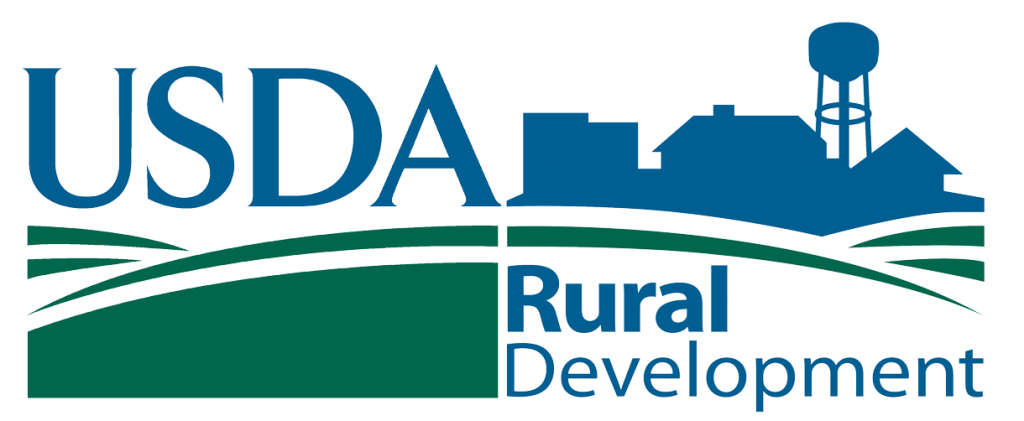
Lincoln, Neb., Oct. 22, 2019 – U.S. Department of Agriculture (USDA) Rural Development Nebraska State Director Karl Elmshaeuser announced that Nebraska has been allocated with nearly $2.2 million in grants available through the Community Facilities Program to help rural communities continue in their recovery from the devastating effects of FEMA declared disasters in Nebraska.
“Nebraska has been hit hard by the devastating weather, with 83 of our counties receiving Major Disaster Declarations,” Elmshaeuser said. “USDA works hard to help communities thrive and this funding supports in their long-term recovery.”
The $2.2 million is included in the Additional Supplemental Appropriations for Disaster Relief Act that President Trump signed into law on June 6, 2019.
Nebraska declared counties are: Adams, Antelope, Banner, Blaine, Boone, Box Butte, Boyd, Brown, Buffalo, Burt, Butler, Cass, Cedar, Cherry, Cheyenne, Clay, Colfax, Cuming, Custer, Dakota, Dawes, Dawson, Deuel, Dixon, Dodge, Douglas, Fillmore, Franklin, Frontier, Furnas, Gage, Garden, Garfield, Gosper, Greeley, Hall, Hamilton, Harlan, Holt, Howard, Jefferson, Johnson, Kearney, Keith, Keya Paha, Kimball, Knox, Lancaster, Lincoln, Logan, Loup, Madison, Merrick, Morrill, Nance, Nemaha, Nuckolls, Omaha Indian Reservation, Otoe, Pawnee, Phelps, Pierce, Platte, Polk, Ponca TDSA, Richardson, Rock, Sac and Fox Indian Reservation, Saline, Santee Indian Reservation, Sarpy, Saunders, Scotts Bluff, Seward, Sheridan, Sherman, Stanton, Thayer, Thomas, Thurston, Valley, Washington, Wayne, Webster, Wheeler, Winnebago Indian Reservation, and York.
Grant applications will be accepted at USDA Rural Development Attn: Community Programs; 100 Centennial Mall North; Federal Building Room 308; Lincoln, Neb. 68508. Applications will be accepted on a continual basis until funds are exhausted. Grant assistance will be provided on a graduated scale; smaller communities with the lowest median household income are eligible for a higher proportion of grant funds. For application details and additional information, see page 47477 of the Sept. 10 Federal Register. In Nebraska, contact your local Rural Development Community Program Staff.
More than 100 types of projects are eligible for Community Facilities funding. Eligible applicants include municipalities, public bodies, nonprofit organizations and federally recognized Native American tribes.
Projects must be in eligible rural areas with a population of 20,000 or less.
In April 2017, President Donald J. Trump established the Interagency Task Force on Agriculture and Rural Prosperity to identify legislative, regulatory and policy changes that could promote agriculture and prosperity in rural communities. In January 2018, Secretary Perdue presented the Task Force’s findings to President Trump. These findings included 31 recommendations to align the federal government with state, local and tribal governments to take advantage of opportunities that exist in rural America. Increasing investments in rural infrastructure is a cornerstone recommendation of the task force.
To view the report in its entirety, please view the Report to the President of the United States from the Task Force on Agriculture and Rural Prosperity (PDF, 5.4 MB). In addition, to view the categories of the recommendations, please view the Rural Prosperity infographic (PDF, 190 KB).
USDA Rural Development provides loans and grants to help expand economic opportunities and create jobs in rural areas. This assistance supports infrastructure improvements; business development; housing; community facilities such as schools, public safety and health care; and high-speed internet access in rural areas. For more information, visit www.rd.usda.gov.
*USDA is an equal opportunity provider, employer and lender.
The Census and Special Districts in the U.S.
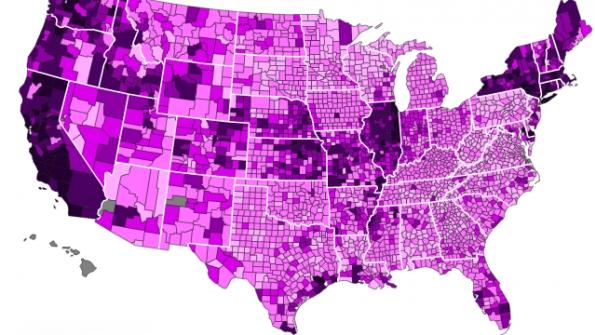
From Municipalities to Special Districts, Official Count of Every Type of Local Government is in the 2017 Census of Governments.
We know what counties and municipalities are. But what are special districts?
Special districts are independent government units created for a limited, specific purpose and, every year, new districts are created and existing ones dissolve.
The latest in-depth, encyclopedic count of special districts and all types of local governments in the United States is now available.
Released earlier this year, the U.S. Census Bureau’s 2017 Census of Governments Organization component provides statistics on governments in the United States as of June 2017 and shows changes since the last count in 2012.
Tables show counts by government type, state, population-size groups, function and school systems.
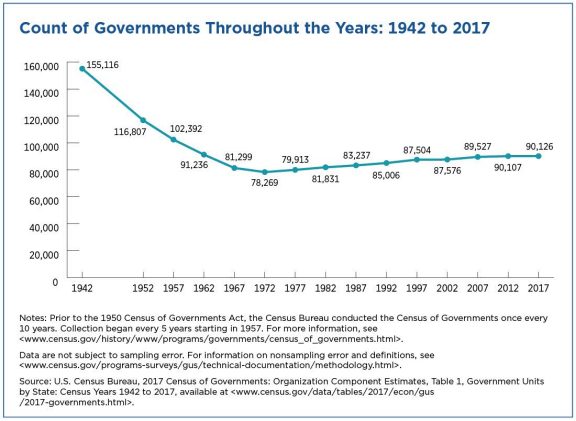
Local governments are classified into five types: county, municipal, township, special districts and school districts.
County, municipal and township governments are general-purpose governments. The official count for those types of governments has not changed significantly since 2012.
Then there are special districts.
They typically have a shorter lifespan and higher turnover than general purpose governments, but the difference in their counts was also relatively slim between 2012 and 2017: The 2017 Census of Governments added more than 1,500 special districts and removed roughly 1,260 that are no longer operating.
Nebraska Examples of Special Districts
Airport Authorities, Cemetery Districts, Community Building Districts, County Fair Boards, Drainage Districts, Hospital Districts and Authorities, Housing Agencies, Interstate County Bridge Commissions, Irrigation Districts, Joint Electric Power, Sewerage and Solid Waste Disposal, Water Distribution Agencies—1981 Law, Joint Public Power Authorities—1982 Law, Metropolitan Transit Authority, Metropolitan Utilities Districts, Natural Resources Districts, Public Power Districts, Reclamation Districts, Risk Management Pools, Road and Street Improvement Districts—1957 and 1961 Laws, Rural and Suburban Fire Protection Districts, Rural Water Districts, and Sanitary and Improvement Districts.
Why So Many New Special Districts?
So why are states creating special districts these days?
In some cases, states create them to provide services to newly- developed geographic areas.
In other cases, the special purpose activity or services already exist, but residents expect a higher level of quality.
For example, a state may have fire protection services. However, the established governmental structure may not legally allow the fire district to raise enough funds to maintain the desired level of quality services.
That’s when a state may choose to create a special district. Most special districts can levy additional property or sales taxes, and may borrow money to buy or build facilities by issuing bonds.
Some districts are only active for a limited time, usually as long as it takes to pay back a debt.
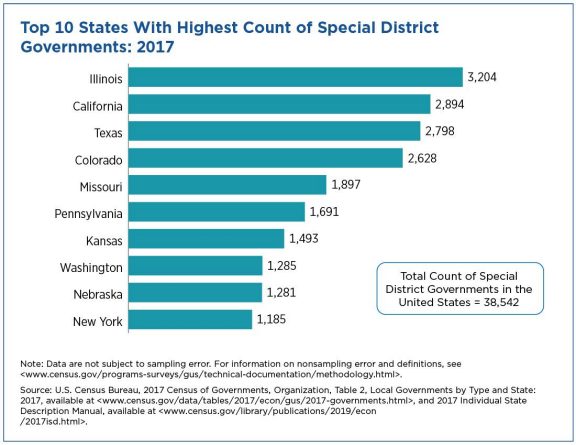
Multifunction Districts
Between the 2012 and 2017 census, multifunction districts grew the most.
Multifunction districts can collect property taxes and issue tax-exempt bonds. Legislation authorizing multifunction districts was passed in most states across the nation in the 1980s.
For example:
- In Colorado, the 2017 Census of Governments added close to 270 metropolitan districts to the master list of local governments in the state.
Metropolitan districts can provide a wide array of services, such as fire protection, street improvements, recreation, mosquito control and television relay services.
These districts can collect property taxes and issue public debt. That’s why it’s important to keep track of public funds controlled by these districts.
Most of the metropolitan districts in Colorado are development districts created to provide funding for development projects.
- In Texas, multifunction districts, called Municipal Utility Districts (MUDs), also showed growth. The 2017 Census of Governments added nearly 200 units to the master list of local governments in Texas.
MUDs provide a variety of utility services in areas not included in a municipality. These districts can finance developing infrastructure and housing.
MUDs can incur public debts in the form of bonds to finance infrastructure and/or housing, and may dissolve in 15 to 25 years after the debt is paid in full.
As in Colorado, developers who see public-private partnerships as business opportunities usually drive the creation of multifunction districts.
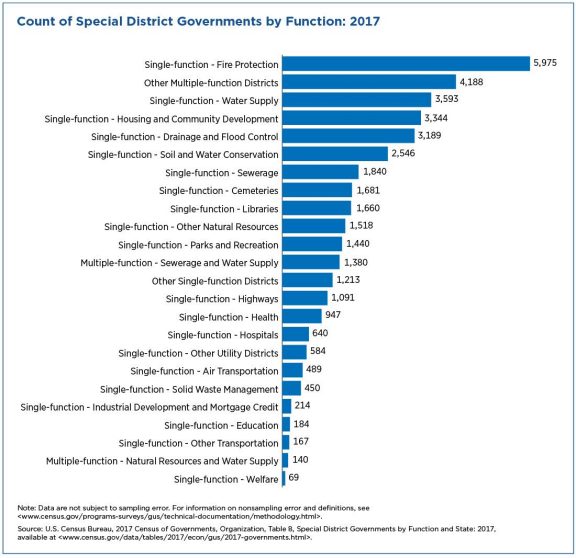
Development And Water Supply Districts
Financing capital improvement was the leading force behind special district growth in Florida.
The 2017 Census of Governments added about 130 new Community Development Districts (CDD). In Florida, CDDs may finance a variety of community development projects, such as new sewage facilities.
The 2017 Individual State Descriptions publication provides a comprehensive description of the governmental organization for the 50 states and the District of Columbia.
Some of these districts are similar to Community Improvement Associations (CIAs) in size and scale of operations. Both are a result of the housing boom from 2003 to 2008.
The major difference is that CDDs are considered public government units that enjoy some tax exemptions, although this comes with other regulations and required transparency in governing these districts.
The 2017 Census of Governments data also reflect the creation of more water supply districts in New Mexico. Over 150 Mutual Domestic Water Consumers Associations were included as special district governments since the last census. Other states, including California, Arkansas, Missouri and Washington, also added between 10 to 20 water supply districts.
Fire And Emergency Services Districts
Nationally, Emergency Services Districts (ESD) that provide local fire protection and ambulance services have grown this decade: 150 were created from 2012 to 2017 — 130 of them in Texas.
The increase is centered in areas experiencing the fastest population growth in the country since the 2010 Census.
Often, ESDs are organized as a funding tool for existing volunteer fire departments. These allow volunteer fire districts to collect additional property and sales taxes to provide service to their expanding communities.
It can be challenging to find fire-fighting funding in areas losing population and experiencing declining property values.
In Arizona, for example, laws passed in 2013 allow fire districts to consolidate into fire authorities to reduce overhead costs. The 2017 Census of Governments shows 14 new joint fire authorities in Ohio.
Some township volunteer fire departments have recently begun to combine personnel, equipment and property tax revenue to become official special district governments.
Another way districts can improve emergency response and rescue operations is by creating Emergency Communications (911) Districts to help coordinate resources between municipalities, counties and other local governments.
Some states, including Texas, Iowa, and Oregon, have had them since 1985. Others like Washington and Massachusetts have recently introduced laws enabling citizens to create 911 districts.
Download the Individual State Descriptions: 2017 Census of Governments
A History of the Census in the United States : Part 3
The 3rd Census: Census Day was August 6, 1810
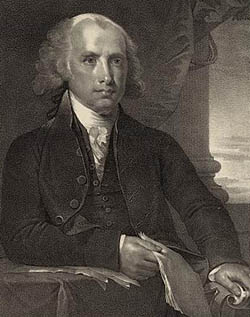
Authorizing Legislation
The authorization act for the third census stipulated that an assistant marshal must actually visit each household, or the head of each family, within his designated enumeration district and should not rely on hearsay or the like to complete his count. The act also mandated that the enumeration commence on the first Monday of August.
Enumeration
An act of May 1, 1810 amended the earlier authorizing legislation to require that, while they were collecting demographic data, assistant marshals also collect available economic data. These men recorded the “several manufacturing establishments and manufactures within their several districts, territories, and divisions.” The marshals transmitted the manufacturing data to the secretary of the treasury at the same time they sent the results of the population enumeration to the secretary of state. No schedule was prescribed for the collection of industrial data and the nature of the inquiries were at the discretion of the secretary of the treasury. Because of this, the collection of manufacturing data was so erratic that it was generally considered useless except to identify broad industrial trends.
Intercensal Activity
An act of May 16, 1812, provided for the publication of a digest of manufactures containing data on the kind, quality, and value of goods manufactured, the number of establishments, and the number of machines of various kinds used in certain classes of manufactures. The report containing incomplete returns for more than 200 kinds of goods and including several items that were principally agricultural, was published in 1813.
Further Information
- A wide variety of historical statistics from this and other decades is available in Historical Statistics of the United States: Colonial Times to 1970. It is available as a PDF [74.4MB] or 2-part ZIP file: Part I [52.2MB] | Part II [66.1MB].
- Reports and statistics from the 1810 census
- History and Growth of the United States Census: 1790-1890 [PDF 117MB], by Carroll D. Wright and William C. Hunt.
Information provided from Census.gov
Throwback Thursday: Dance Class
Dancing our way towards the weekend with this week’s #ThrowbackThursday!

This black and white photograph from the early 1900s is provided and owned by Wayne State College. In a continuing effort to preserve and make accessible photographs depicting the history of Wayne State College and the region it serves, the Wayne State College Library is digitizing selected photographs from its archives. Photographs from the early 1900s show the buildings and grounds of the campus, athletic teams, the Student Army Training Corps, and other groups while slightly later images show famous visitors to campus.
Want to see more Nebraska history? Check out all the collections on the Nebraska Memories archive.
Nebraska Memories is a cooperative project to digitize Nebraska-related historical and cultural heritage materials and make them available to researchers of all ages via the Internet. The Nebraska Memories archive is brought to you by the Nebraska Library Commission. If your institution is interested in participating in Nebraska Memories, see http://nlc.nebraska.gov/nebraskamemories/participation.aspx for more information.
E-rate @ West Point
Have you registered for the upcoming E-rate workshops? In person workshops are still open for Grand Island (October 28), and Ashland (November 12). Registration information can be found here:
Don’t worry if you miss (the workshop that is), as you can always register or view the online session. It’s the E-rate you don’t want to miss out on. You can also make it a full day and attend the afternoon Digital World session. For more information about the impact of E-rate, check out this week’s Adobe Spark video. Like the others, this was created using all free resources. This week’s story is from the John Stahl Public Library in West Point:
[youtube https://www.youtube.com/watch?v=bVLf0S283Z8&w=560&h=315]Shortlist for 2020 One Book One Nebraska Announced

FOR IMMEDIATE RELEASE:
October 22, 2019
FOR MORE INFORMATION:
Tessa Terry
402-471-3434
800-307-2665
Shortlist for 2020 One Book One Nebraska Announced
What book will all Nebraskans be encouraged to read in 2020? We will all find out on November 9th. A Pearl Harbor memoir, a Midwest family saga, and an American/refugee cultural narrative—all stories with ties to Nebraska and the Great Plains—are the finalists for the 2020 One Book One Nebraska statewide reading program. The finalists are:
- The Plain Sense of Things by Pamela Carter Joern, University of Nebraska Press (2008)
- All the Gallant Men: An American Sailor’s Firsthand Account of Pearl Harbor by Donald Stratton (with Ken Gire,) William Morrow (2016)
- The Middle of Everywhere: Helping Refugees Enter the American Community by Mary Pipher, Mariner Books (2003)
The One Book One Nebraska reading program, now in its fifteenth year, is
sponsored by the Nebraska Center for the Book, Humanities Nebraska, and
Nebraska Library Commission. It encourages Nebraskans across the state to read
and discuss the same book, chosen from books written by Nebraska authors or
that have a Nebraska theme or setting. A Nebraska Center for the Book committee
selected the three finalists from a list of twenty-four titles nominated by
Nebraskans. In the coming weeks, Nebraska Center for the Book board members
will vote on the 2020 selection.
Nebraskans are invited to attend the Celebration of Nebraska Books on November
9, where the choice for the 2020 One Book One Nebraska will be announced at
5:30 p.m. at the Nebraska History Museum, 131 Centennial Mall North, in
downtown Lincoln. This year’s One Book One Nebraska selection, This Blessed
Earth: A Year in the Life of an American Family Farm (Norton & Company,
2017) by Ted Genoways will be featured in a keynote presentation by the author at
2:45 p.m. See http://onebook.nebraska.gov
or https://www.facebook.com/OneBookOneNebraska
for more information about ongoing 2019 One Book One Nebraska activities.
The November 9 Celebration of Nebraska Books is scheduled for 2:30 – 6:30 p.m.,
with the Nebraska Center for the Book Annual Meeting to be held at 1:30 p.m.
Awards will be presented to the winners of the 2019 Nebraska Book Awards,
and some of the winning authors will read from their work. A list of Nebraska
Book Award winners is posted at http://centerforthebook.nebraska.gov/awards.html.
The Celebration of Nebraska Books is sponsored by the Nebraska Center for the
Book and Nebraska Library Commission with support from History Nebraska’s
Nebraska History Museum. Humanities Nebraska provides support for the One Book
One Nebraska keynote presentation.
The Nebraska Center for the Book is housed at the Nebraska Library Commission
and brings together the state’s readers, writers, booksellers, librarians,
publishers, printers, educators, and scholars to build the community of the
book, supporting programs to celebrate and stimulate public interest in books,
reading, and the written word. The Nebraska Center for the Book is supported by
the national Center for the Book in the Library of Congress and the Nebraska
Library Commission.
As the state library agency, the Nebraska Library Commission is an advocate for
the library and information needs of all Nebraskans. The mission of the Library
Commission is statewide promotion, development, and coordination of library and
information services, “bringing together people and information.”
###
The most up-to-date news releases from the Nebraska Library Commission are always available on the Library Commission website, http://nlc.nebraska.gov/publications/newsreleases.
A History of the Census in the United States : Part 2
The 2nd Census: Census Day was August 4, 1800
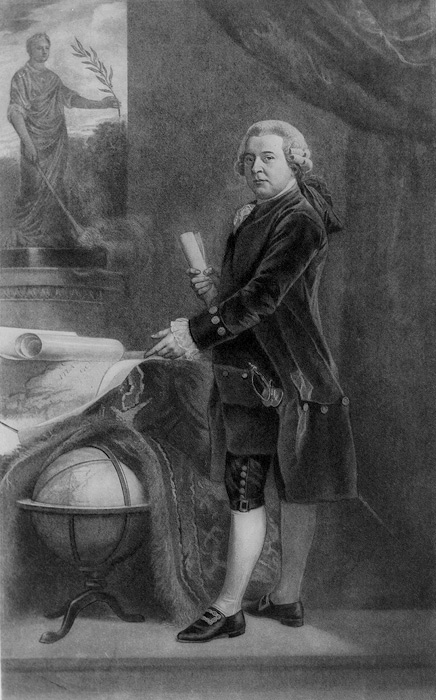
Authorizing Legislation
An act of February 28, 1800 authorized the second census of the United States, which was to include the states and territories northwest of the Ohio River and Mississippi Territory. The census was to conclude within nine calendar months of its start.
The guidelines for the 1800 enumeration followed those of the first census, with only minor alterations in the law. John Marshall, secretary of state in 1800, was the nominal head of census operations. By early 1801, however, Marshall was chief justice of the Supreme Court. James Madison, his successor as secretary of state, oversaw the final tabulations and reported population totals to Congress and the president.
Enumeration
The questionnaire provided space to separately tally free white males and females in several age categories: under 10, 10 but under 15, 16 but under 25, 25 but under 45, and over 45. Indians, slaves, and free blacks were listed in single categories undivided into age groups.
Further Information
- A wide variety of historical statistics from this and other decades is available in Historical Statistics of the United States: Colonial Times to 1970. It is available as a PDF [74.4MB] or 2-part ZIP file: Part I [52.2MB] | Part II [66.1MB].
- History and Growth of the United States Census: 1790-1890 [PDF 117MB], by Carroll D. Wright and William C. Hunt.
Information provided from Census.gov
Throwback Thursday: Brainard Fire Truck
Check out the first fire truck to make its way to Brainard, Nebraska!
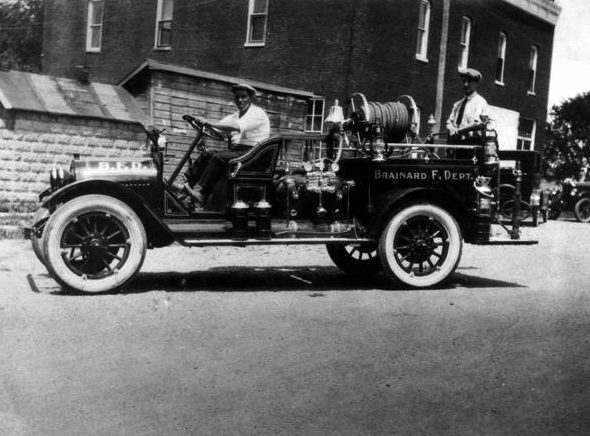
The first fire-fighting equipment to arrive in Brainard was a hose cart that was purchased in 1889. At that time, there were no fire fighters. When the fire bell rang, all the townsmen would help in any way they could.
In 1923, a meeting took place and organized a fire department. In 1925, they converted this 1924 Oldsmobile chassis with over $1,000 worth of fire-fighting equipment into the town’s first fire engine.
This image is owned by the Thorpe Opera House Foundation and published as part of the Boston Studio Project.
Interested in checking out more Nebraska history? Visit the Nebraska Memories archive to see this photo and many more!
Nebraska Memories is a cooperative project to digitize Nebraska-related historical and cultural heritage materials and make them available to researchers of all ages via the Internet. The Nebraska Memories archive is brought to you by the Nebraska Library Commission. If your institution is interested in participating in Nebraska Memories, see http://nlc.nebraska.gov/nebraskamemories/participation.aspx for more information.
Jobs Available for the 2020 Census!
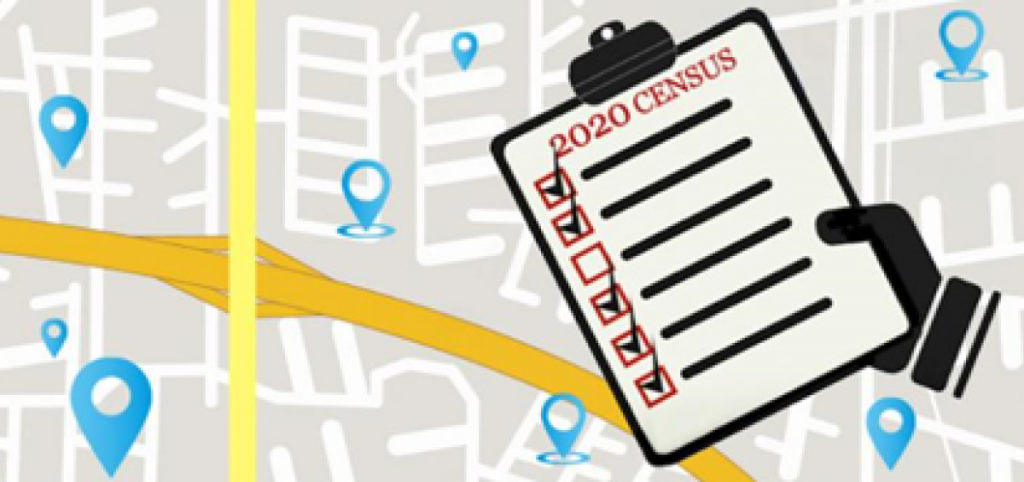
The week of October 21st is Jobs Week for the 2020 Census! Anyone can apply!
The posters below can be printed out and placed anywhere in your library!
Visit 2020 Census Jobs for more information!
Posted in Census, Education & Training, General, Information Resources, Uncategorized, What's Up Doc / Govdocs
Tagged census
Leave a comment

